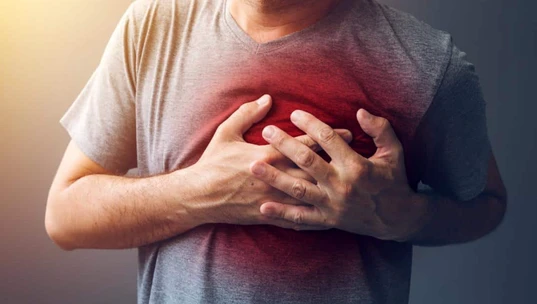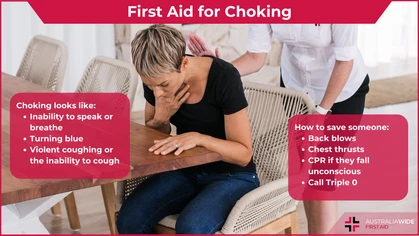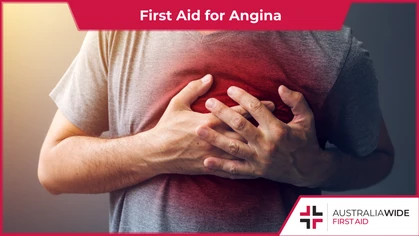First Aid for Shock

How-To

Shock is a medical emergency that occurs when there is not enough blood circulating through the body due to an illness or injury, such as anaphylaxis or external bleeding. Shock is a deteriorating condition that does not allow the casualty to recover without medical intervention.
Shock is a life-threatening condition that occurs when not enough blood is flowing through the body. Shock can develop from several different events that cause the blood pressure to drop, such as trauma, heart attack, or an allergic reaction. This drop in blood pressure subsequently reduces blood flow to vital organs, thereby depriving them of oxygen and potentially causing irreversible damage. Given that shock can result from traumatic injuries, and is usually fatal if left untreated, we’ve written this article to help you understand the causes, symptoms, and first aid responses for shock. That way, when you are treating for shock, you can remain calm, respond to the casualty’s condition, and perhaps make the difference between life and death.What is Non-Medical Shock?
Before we dive into shock, it is important to outline the differences between psychologic (non-medical) and physiologic (medical) shock. According to the Better Health Channel, psychologic (non-medical) shock is the body’s response to fear or anxiety. Although the symptoms of non-medical shock are similar to those of medical shock, they are generally short-lived and resolve themselves once the stressor is removed. In this article, we will be focusing on medical shock.What is Medical Shock?
Shock is a critical condition that occurs when the blood flow in the body is suddenly reduced. Blood is responsible for supplying organs and the cells they comprise with life-sustaining nutrients and oxygen. As such, this sudden drop in blood flow can deprive the cells and organs of oxygen, thereby disrupting their normal function and potentially leading to irreversible damage and even death.What Causes Shock?
According to Healthline, shock can be caused by any injury or condition that affects the flow of blood through the body. There are several different types of shock, and the type of shock that a casualty experiences ultimately depends on the injury or condition that affected their blood flow. In the next four sections, we will explore the four major types of shock.Obstructive Shock
Obstructive shock occurs when the flow of blood is resisted or obstructed – that is, the blood cannot get where it needs to go. Common causes of obstructive shock can include:- Pulmonary embolism – a blood clot in one or more of the lungs’ arteries.
- Pneumothorax (collapsed lung) – when air escapes the lung, enters the chest cavity, and subsequently puts pressure on the lung.
- Cardiac tamponade – when blood or other fluids fill the space between the heart muscle and the sac encasing the heart, which subsequently compresses the former.

The most common cause of cardiogenic shock is heart attack. Heart attack occurs when the blood flow to the heart is blocked. Symptoms include sudden pain in the chest, which can spread to the arms, neck, and back.
Cardiogenic Shock
Cardiogenic shock occurs when the heart is weakened or damaged and can no longer effectively pump blood around the body. Heart attacks are the most common cause of cardiogenic shock. Heart attacks occur when the blood flow to the heart is blocked, which can damage the left ventricle – the chamber of the heart that pumps oxygenated blood to the rest of the body. Other common causes of cardiogenic shock can include:- Myocarditis – when the heart muscle becomes inflamed, typically due to infection.
- Heart failure – a progressive condition in which the heart is unable to pump enough blood to meet the body’s needs, typically due to a build-up of fatty deposits in the arteries.
Distributive Shock
Distributive shock, otherwise known as vasodilatory shock, occurs when blood vessels lose their tone and become floppy, which drives the blood pressure down and reduces how much blood is supplied to the organs. There are three primary conditions that can cause distributive shock:- Anaphylactic shock – a severe allergic reaction in which the immune system releases chemicals, such as histamines, that constrict the airways, expand the blood vessels, and cause a dangerous drop in blood pressure.
- Septic shock – the final, most severe stage of sepsis, a condition in which the body responds overwhelmingly to an infection and begins attacking its own tissues and organs. During septic shock, the body releases infection-fighting chemicals on a systemic scale, thereby dilating the blood vessels and causing a massive drop in blood pressure.
- Neurogenic shock – when the central nervous system is damaged due to a spinal cord injury and can no longer regulate heart rate, blood pressure, or temperature.

One major cause of hypovolemic shock is severe burns. This is because heat damage increases the permeability of the capillaries, which allows plasma and other extracellular fluids to leak out of blood circulation.
Hypovolemic Shock
Hypovolemic shock occurs when there is not enough fluid (blood) volume circulating in the blood vessels to supply the organs with life-sustaining oxygen and nutrients. Hypovolemic shock can occur following any illness or injury that causes the body to lose a significant quantity of blood or extracellular fluid, for instance:- Internal bleeding – such as a ruptured artery or organ.
- External bleeding – such as a deep wound.
- Severe burns.
- Dehydration.
- Chronic vomiting and/or diarrhoea.<.li>
Signs and Symptoms of Shock
Depending on the cause of the shock, the casualty may experience one or more of the following symptoms:- Cool, clammy skin that is also pale or ashen.
- Rapid heartbeat and/or breathing.
- Nausea and/or vomiting.
- Dark urine and/or decreased urine output.
- Dilated pupils.
- Thirst and/or dry mouth.
- Behavioural changes, such as anxiety.
- Dizziness and/or confusion.
- Unconsciousness.
- Does the injury appear serious?
- If I don’t do anything to help, is the casualty likely to worsen?
- If the casualty’s condition worsens, is it likely to result in death?
First Aid for Shock
Here at AWFA, shock is considered a top priority, second only to attending to safety, an obstructed airway, absence of breathing, cardiac arrest, or severe lie-threatening bleeding. This is because shock is a deteriorating condition that will not allow a casualty to recover without active medical intervention. To treat for shock, follow the below steps:- Call Triple Zero (000) for an ambulance.
- Follow ‘basic wound care’ steps.
- Control any bleeding.
- If conscious, lie the casualty down on their back.
- If unconscious, place the casualty into the recovery position.
- Monitor and reassure the casualty.
- Keep the casualty warm by whatever means necessary, but do not apply heat.
- Treat any other injuries.
Final Thoughts
Shock is a life-threatening medical emergency that arises when there is not enough blood circulating through the body. This drop in blood pressure deprives the organs of life-sustaining oxygen and nutrients, which can result in irreversible organ damage and death. Shock can result from a variety of different injuries or conditions, including anaphylaxis, heart attack, and external bleeding. When treating for shock, it is important to call Triple Zero (000) for an ambulance, and to keep the casualty at rest while reassuring them and treating their other injuries. To learn even more about identifying and managing the symptoms of shock, book a First Aid course with Australia Wide First Aid today.
Originally published at
https://www.australiawidefirstaid.com.au/resources/first-aid-for-shock
as part of the Australia Wide First Aid Articles Library









